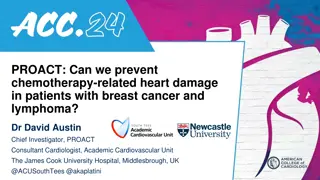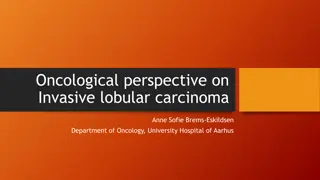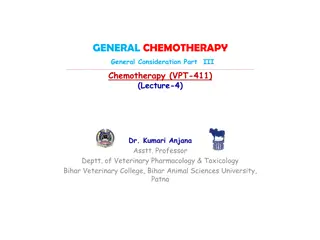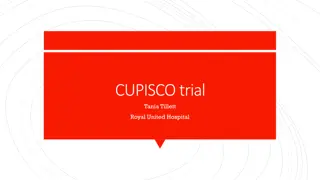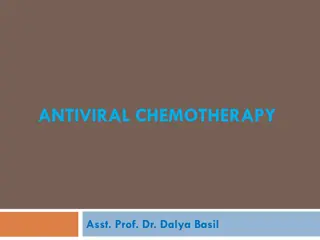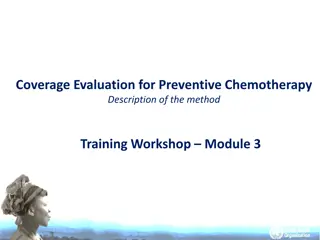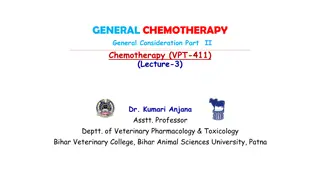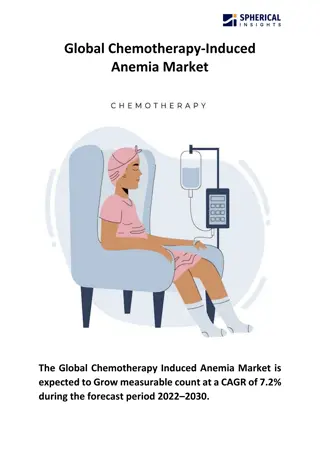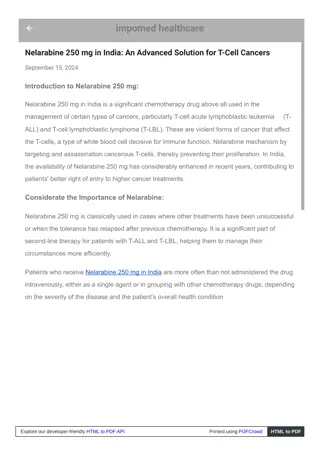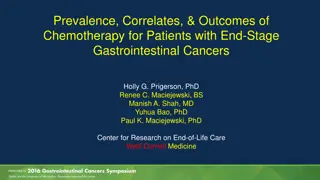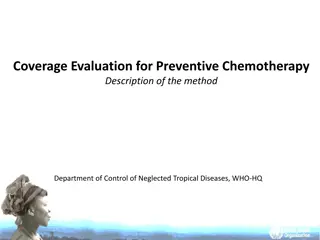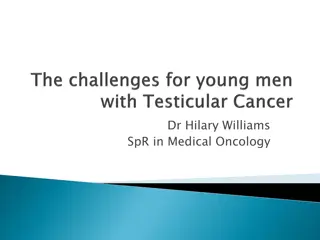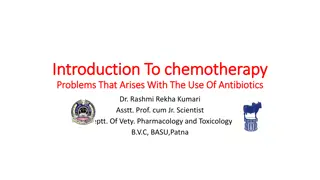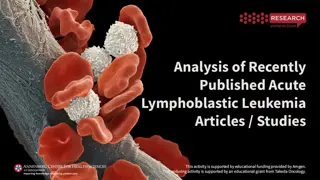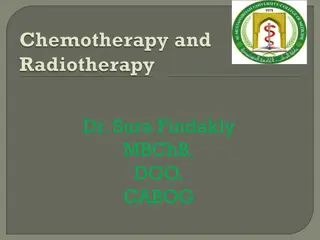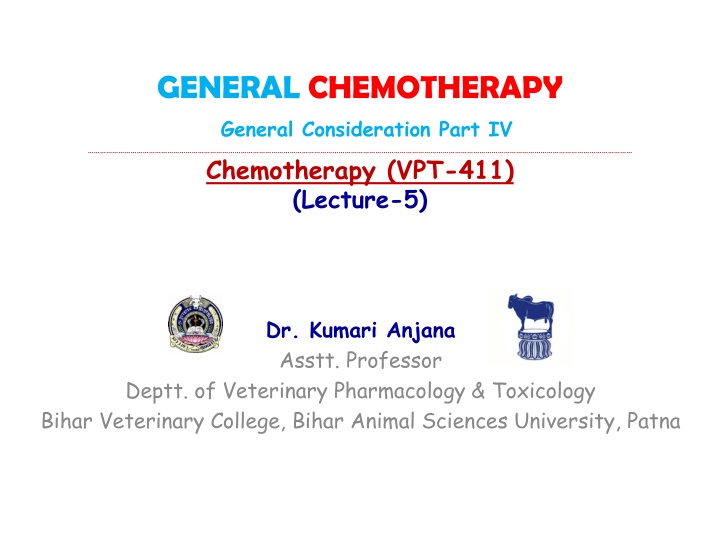
Veterinary Chemotherapy Considerations for Patient Factors and Drug Interactions
Explore the impact of patient factors like age, renal function, and local considerations on the choice and dosage of antimicrobial agents in veterinary chemotherapy. Understand the implications of drug factors such as dose adjustments in renal and hepatic failure, and the effects of liver disease on antimicrobial therapy. Gain insights into the importance of considering local factors when prescribing antimicrobials for optimal efficacy in treating infections.
Download Presentation

Please find below an Image/Link to download the presentation.
The content on the website is provided AS IS for your information and personal use only. It may not be sold, licensed, or shared on other websites without obtaining consent from the author. If you encounter any issues during the download, it is possible that the publisher has removed the file from their server.
You are allowed to download the files provided on this website for personal or commercial use, subject to the condition that they are used lawfully. All files are the property of their respective owners.
The content on the website is provided AS IS for your information and personal use only. It may not be sold, licensed, or shared on other websites without obtaining consent from the author.
E N D
Presentation Transcript
GENERAL CHEMOTHERAPY General Consideration Part IV Chemotherapy (VPT-411) (Lecture-5) Dr. Kumari Anjana Asstt. Professor Deptt. of Veterinary Pharmacology & Toxicology Bihar Veterinary College, Bihar Animal Sciences University, Patna
Content of the chapter Patient factors Organism-related considerations Drug factors
Patient factors :Affecting the choice of Antimicrobial Agent Age Renal and hepatic function Local factors Drug allergy Impaired host defense Pregnancy Genetic factors
Age Affect kinetics of many AMAs. Conjugation and excretion of chloramphenicol is inefficient in the newborn: larger doses produce gray baby syndrome. Sulfonamides displace -bilirubin from protein binding sites can cause kernicterus in the neonate because their blood brain barrier is more permeable. The t of aminoglycosides is prolonged in the elderly and they are more prone to develop VIII nerve toxicity. Tetracycline deposit in the developing teeth and bone discolour and weaken them are contraindicated below the age of 6 years.
Antimicrobials needing dose reduction/ avoidance in renal failure Reduce dose even in mild failure Aminoglycosides, Amphotericin B, Cephalosporins, Ethambutol, Vancomycin, Flucytosine Reduce dose only in moderate-severe failure Metronidazole, Carbenicillin Cotrimoxazole, Fluoroquinolones Aztreonam, Clarithromycin Meropenem, Imipenem Drugs to be avoided Cephalothin, Talampicillin Nalidixic acid, Tetracyclines Nitrofurantoin (except doxycycline)
Antimicrobials in liver disease Drugs to be avoided Erythromycin estolate, Tetracyclines, Pyrazinamide, Nalidixic acid, Talampicillin , Pefloxacin Dose reduction needed Chloramphenicol, Isoniazid Metronidazole, Rifampin Clindamycin
Local factors Presence efficacy of most AMAs, especially sulfonamides and aminoglycosides. of pus and secretions decrease the Presence of necrotic material or foreign body makes eradication of infection practically impossible. Haematomas foster bacterial growth; tetracyclines, penicillins and cephalosporins get degraded haemoglobin in the haematoma. bound to the Lowering of pH at the site of infection reduces activity of macrolide and aminoglycoside antibiotics.
Anaerobic environment in the centre of an abscess impairs bacterial transport concentrate aminoglycosides in the bacterial cell, rendering them less susceptible. processes which Penetration barriers may hamper the access of the AMA to the site of infection in sub-acute bacterial endocarditis (SABE), endophthalmitis, prostatitis. However, trimethoprim attain high concentration in prostate due to ion trapping. and fluoroquinolones
Drug allergy History of previous exposure to an AMA should be obtained. If a drug has caused allergic reaction it has to be avoided in that patient, e.g. drug of choice for syphilis in a patient allergic to penicillin is tetracycline. -lactams, sulfonamides, fluoroquinolones and nitrofurantoin frequently cause allergy.
Impaired host defence In an individual with normal host defence, a bacteriostatic AMA may achieve cure. while intensive therapy with cidal drugs is required in those with impaired host defence or when the organisms are protected by a barrier as in SABE. Even then complete eradication of the organism may not occur.
Pregnancy All AMAs should be avoided in the pregnant because of risk to the foetus. Penicillins, many cephalosporins and erythromycin are safe. Tetracyclines carry risk of acute yellow atrophy of liver, pancreatitis and kidney damage in the mother. They also cause teeth and bone deformities in the offspring. Aminoglycosides can cause foetal ear damage. Animal studies indicate increased risk to the foetus, especially with fluoroquinolones, cotrimoxazole, sulfonamides and nitrofurantoin. chloramphenicol, Though metronidazole has not been found teratogenic, its mutagenic potential warrants caution in its use during pregnancy.
Genetic factors Primaquine, nitrofurantoin, sulfonamides, chloramphenicol fluoroquinolones haemolysis in G-6-PD deficient patient
Organism-related considerations Clinical diagnosis itself directs choice of the AMA A good guess can be made Choice to be based on bacteriological examination o Bacteriological services not available. o Bacteriological services available, but treatment cannot be delayed. o Bacteriological services are available and treatment can be delayed for a few days.
Drug factors Spectrum of activity Type of activity Sensitivity of the organism Relative toxicity Pharmacokinetic profile Route of administration Evidence of clinical efficacy Cost
Spectrum of activity For definitive therapy, a narrow-spectrum drug which selectively affects the preferred. concerned organism is However, for empirical therapy, often a broad- spectrum drug has to be used to cover all likely pathogens.
Type of activity Patient with normal host defence: either bacteriostatic or bacteriocidal drug may be used. Severe acute infection: Resolve faster with Bactericidal AMA. Impaired host defence: Bactericidal AMA.
Sensitivity of organism: Accessed on the basis MIC value and consideration of their post antibiotic effect. Relative Toxicity: Less Toxic antibiotic should be preferred, e.g. a -lactam over an aminoglycosides or erythromycin over clindamycin
Pharmacokinetic Profile Pharmacokinetic Profile: Most antibiotic are given at 2-4 half life intervals concentrations only intermittently. thus attaining therapeutic For many organism, aminoglycosides and fluoroquinolones produce concentration dependent inhibition inhibitory effect depends on the ratio of peak concentration to MIC. The same daily dose of Gentamicin produces better action when given as a single dose than if it is divided into 2-3 portion. While Some other antibiotic produce Time dependent action
Time dependent inhibition: Antimicrobial action depends on the length of time the concentration remains above MIC; division of daily dose have better effect. lactam antibiotic, glycopeptides, and macrolid produce time dependent inhibition. The fluoroquinolones have excellent tissue penetration attain high concentration in soft tissue, lungs, prostrate, joints, etc. Ciprofloxacin and rifampin have very good intracellular penetration. Cefuroxime, ceftriaxone, chloramphenicol, ciprofloxacin attain high CSF concentration.
Tissue distribution pattern of selected AMA Drugs distributed to ECF Penicillins Cephalosporins Aminoglycosides Drugs distributed to total body water Fluoroquinolones Chloramphenicol Doxycycline/Minocycline Sulphonamides Erythromycin Clindamycin Drugs concentrated in bile Doxycycline/minocycline Erythromycin Clindamycin Rifampicin Drugs concentrated in urine Fluoroquinolones Sulphonamides Nalidixic acid Nitrofurantoin Cephalosporins Penicillins Vancomycin Drugs distributed to CSF Sulphonamides Fluoroquinolones Doxycycline/Minocycline Metronidazole Rifampicin
Route Penicillin G, carbenicillin and many cephalosporins, Vancomycin, etc have to be given by injection only. of administration: Aminoglycosides, For less severe infection: oral formulations are preferred. For Severe infection (meningitis, septicaemia) : parenteral antibiotic may be chosen. Cost: Less expensive drugs are to be preferred.

